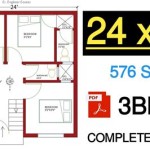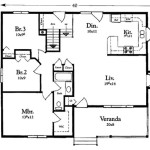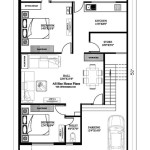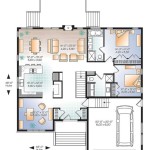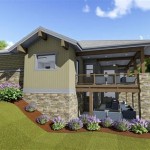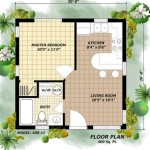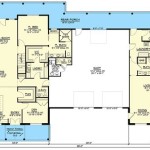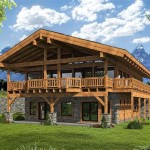Post and Beam Small House Plans: Efficient Living in a Timeless Style
Post and beam construction offers a compelling alternative to conventional framing methods, particularly for small house plans. This structural system, characterized by heavy timber posts and beams, allows for open floor plans, dramatic vaulted ceilings, and a distinct aesthetic appeal. The enduring popularity of post and beam construction stems from its durability, sustainability, and inherent beauty, making it a desirable choice for homeowners seeking a unique and efficient living space.
Small house plans designed with post and beam construction require careful consideration of spatial organization, material selection, and structural engineering. The exposed timber frame becomes an integral part of the design, influencing both the interior and exterior character of the dwelling. The following sections will explore key aspects of post and beam small house plans, highlighting their advantages and considerations for successful implementation.
Advantages of Post and Beam Construction for Small Houses
One of the primary advantages of post and beam construction lies in its ability to create open and flexible interior spaces. The absence of load-bearing walls within the frame allows for greater freedom in space planning. This is particularly beneficial in small houses where maximizing usable area is crucial. With fewer interior walls, light can flow freely throughout the home, creating a brighter and more spacious environment.
Furthermore, the use of large timber elements imparts a sense of solidity and permanence. The exposed beams and posts become architectural features, adding warmth and character to the interior. This inherent aesthetic appeal can reduce the need for extensive interior finishing, potentially saving on construction costs. The visual impact of the timber frame also provides a unique selling point, appealing to homeowners who appreciate natural materials and craftsmanship.
Post and beam construction can also contribute to energy efficiency. Well-insulated infill panels between the posts and beams can provide excellent thermal performance. The thermal mass of the timber itself can help regulate temperature fluctuations, potentially reducing heating and cooling costs. Furthermore, sustainably sourced timber can be a renewable resource, making post and beam construction an environmentally responsible choice.
Key Considerations for Designing Post and Beam Small Houses
Designing a post and beam small house requires a thorough understanding of structural engineering principles. The size and spacing of the posts and beams must be carefully calculated to ensure the structural integrity of the building. Local building codes and regulations must be strictly adhered to, and a qualified structural engineer should be consulted throughout the design and construction process. The foundation design is also critical, as it must be able to support the weight of the timber frame and any infill panels.
Material selection is another important consideration. The choice of timber species will influence the appearance, durability, and cost of the frame. Douglas fir, pine, and cedar are commonly used for post and beam construction, each offering unique characteristics. The quality of the timber is also crucial, and it should be properly seasoned and treated to prevent decay and insect infestation. The infill panels between the posts and beams can be made from a variety of materials, including structural insulated panels (SIPs), conventional framing with insulation, or even natural materials like straw bale or cob.
The design of the connections between the posts and beams is a critical aspect of post and beam construction. Traditional joinery techniques, such as mortise and tenon joints, can be used to create strong and aesthetically pleasing connections. However, modern metal fasteners can also be used to simplify the construction process and reduce costs. The choice of connection method will depend on the design aesthetic, budget, and skill level of the builder.
Planning and Space Optimization in Small Post and Beam Homes
Given the limited square footage available in a small house, careful planning and space optimization are essential. Multi-functional spaces can help maximize the usability of the home. For example, a living room can double as a dining area or home office. Utilizing vertical space is another effective strategy. Lofts can be created to provide additional sleeping or storage areas, taking advantage of the high ceilings often associated with post and beam construction.
Built-in storage solutions can also help minimize clutter and maximize space. Custom-built cabinets and shelving can be integrated into the design to provide ample storage without sacrificing valuable floor space. Consider incorporating storage under stairs, benches, or even within the thickness of walls. The key is to think creatively about how to utilize every available inch of space.
The layout of the home should be carefully considered to optimize flow and functionality. An open floor plan can create a sense of spaciousness and improve circulation. Positioning the kitchen and bathroom strategically can minimize plumbing runs and reduce construction costs. The placement of windows and doors should also be carefully considered to maximize natural light and ventilation.
When planning a post and beam small house, it is essential to consider the long-term needs of the occupants. While the initial focus may be on maximizing space, it is important to ensure that the home is adaptable to future changes in lifestyle or family size. Designing for accessibility can also be a valuable consideration, ensuring that the home is usable by people of all ages and abilities.
The integration of outdoor spaces is another effective way to expand the living area of a small house. Decks, patios, and porches can provide additional space for relaxation, dining, and entertaining. Connecting the indoor and outdoor spaces visually and physically can create a seamless transition and enhance the sense of spaciousness.
The use of natural light is crucial in small homes. Large windows and skylights can bring natural light into the interior, making the space feel brighter and more open. Careful consideration should be given to the orientation of the house to maximize solar gain in the winter and minimize heat gain in the summer. Overhangs and awnings can be used to shade windows and reduce the need for air conditioning.
In addition to natural light, thoughtful lighting design is essential for creating a comfortable and functional living environment. Layered lighting, which combines ambient, task, and accent lighting, can create a warm and inviting atmosphere. Dimmable lights can be used to adjust the lighting levels to suit different activities and moods. Energy-efficient LED lighting is a sustainable and cost-effective choice.
The selection of finishes and materials can also have a significant impact on the overall feel of a small house. Light colors and reflective surfaces can help to make the space feel larger and brighter. Using natural materials, such as wood, stone, and bamboo, can add warmth and texture to the interior. Minimizing clutter and keeping the space organized are also essential for creating a peaceful and relaxing environment.
Ultimately, the success of a post and beam small house depends on careful planning, thoughtful design, and attention to detail. By considering the advantages and considerations outlined above, homeowners can create a unique and efficient living space that reflects their individual style and values.

Small Post And Beam Floor Plan Eastman House Barn Interior Yankee Homes Home

Residential Floor Plans American Post Beam Homes Modern Solutions To Traditional Living

Modern Post And Beam Homes Logangate Timber

Residential Floor Plans American Post Beam Homes Modern Solutions To Traditional Living

House Plans

Pin On Newaygo Homestead

Residential Floor Plans American Post Beam Homes Modern Solutions To Traditional Living

Connecticut Post Beam Tiny House Blog Small Barn Plans

Small Post And Beam Floor Plan Eastman House

Carmel Family Custom Homes Post Beam Cedar Plans

